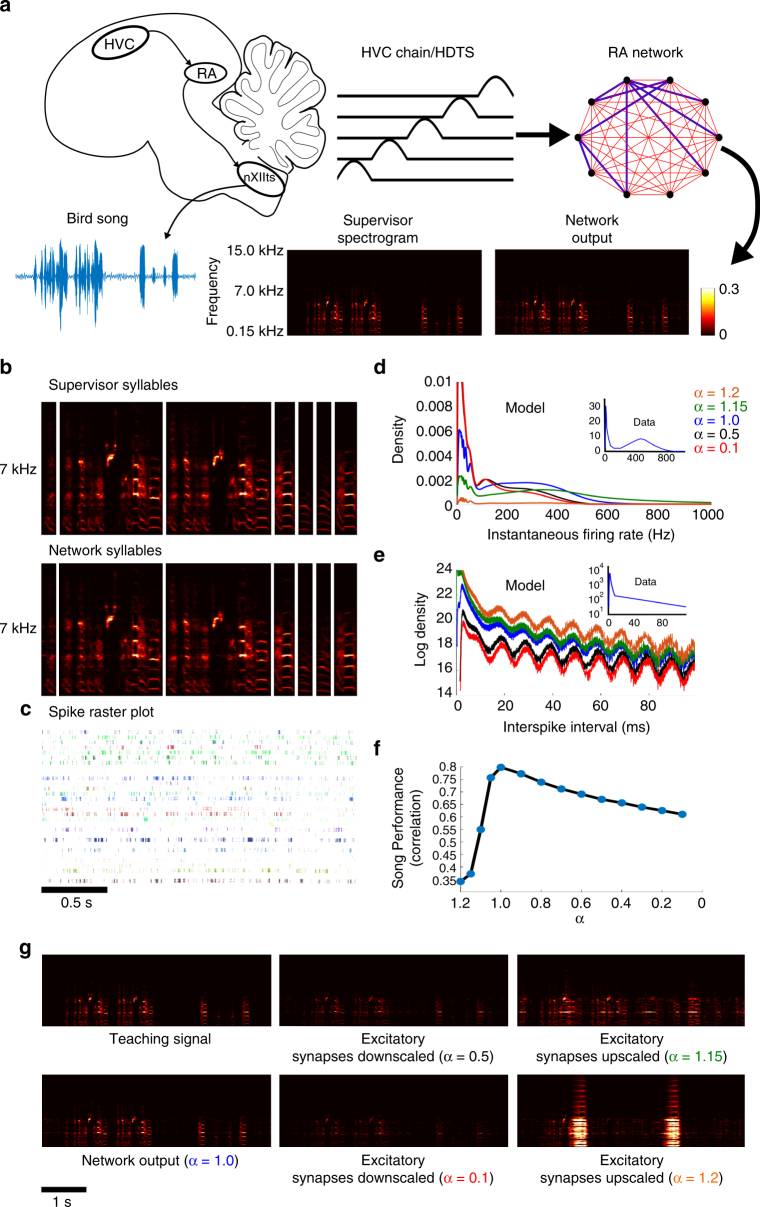Fig. 4.
Using spiking neural networks for pattern storage and replay: songbird singing. a A series of pulses constructed from the positive portion of a sinusoidal oscillator with a period of 20 ms are used to model the chain of firing output from RA projection neurons in HVC. These neurons connect to neurons in RA and trigger singing behavior. FORCE training was used to train a network of 1000 Izhikevich neurons to reproduce the spectrogram of a 5 s audio recording from an adult zebra finch. b The syllables in the song output for the teaching signal (top) and the network (bottom). c Spike raster plot for 30 neurons over 5 repetitions of the song. The spike raster plot is aligned with the syllables in b. d The distribution of instantaneous firing rates for the RA network post training. The α parameter corresponds to the up/down regulation factor of the excitatory synapses and to the different colors in the graphs of d, e. For α > 1, excitation dominates over inhibition while the reverse is true for α < 1. The inset of d, e is reproduced from ref. 37. Note that the y-axis of the model and data differ, this is due to normalization of the density functions. e The log of the interspike interval histogram. f The correlation between the network output and the teaching signal as the excitatory synapses are upscaled (negative x-axis) or downscaled (positive x-axis). g The spectrogram for the teaching signal, and the network output under different scaling factors for the excitatory synaptic weights. The panels in g correspond to the plots in d, e and the performance measure in f

